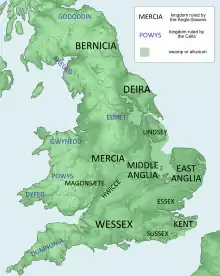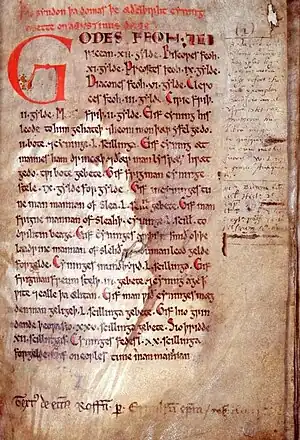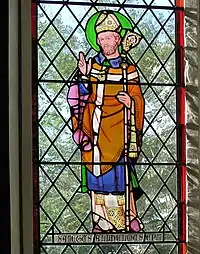Portal:Anglo-Saxon England
Anglo-Saxon England
Anglo-Saxon England or Early Medieval England, existing from the 5th to the 11th centuries from soon after the end of Roman Britain until the Norman Conquest in 1066, consisted of various Anglo-Saxon kingdoms until 927, when it was united as the Kingdom of England by King Æthelstan (r. 927–939). It became part of the short-lived North Sea Empire of Cnut the Great, a personal union between England, Denmark and Norway in the 11th century. The Anglo-Saxons migrated to Britain (Pretanī, Prydain) from mainland northwestern Europe after the Roman Empire withdrawal from the isle at the beginning of the 5th century. Anglo-Saxon history thus begins during the period of sub-Roman Britain following the end of Roman control, and traces the establishment of Anglo-Saxon kingdoms in the 5th and 6th centuries (conventionally identified as seven main kingdoms: Northumbria, Mercia, East Anglia, Essex, Kent, Sussex, and Wessex); their Christianisation during the 7th century; the threat of Viking invasions and Danish settlers; the gradual unification of England under the Wessex hegemony during the 9th and 10th centuries; and ending with the Norman Conquest of England by William the Conqueror in 1066. The Normans persecuted the Anglo-Saxons and overthrew their ruling class to substitute their own leaders for the purposes of overseeing and ruling England. However, Anglo-Saxon identity survived beyond the Norman Conquest, came to be known as Englishry under Norman rule, and through social and cultural integration with Romano-British Celts, Danes and Normans became the modern English people. (Full article...) Selected article
The Law of Æthelberht is a set of legal provisions written in Old English, probably dating to the early 7th century. It originates in the kingdom of Kent, and is the first Germanic-language law code. It is also thought to be the earliest example of a document written in English, though extant only in an early 12th-century manuscript, Textus Roffensis. The code is concerned primarily with preserving social harmony, through compensation and punishment for personal injury. Compensations are arranged according to social rank, descending from king to slave. The initial provisions of the code offer protection to the church. Though the latter were probably innovations, much of the remainder of the code may be derived from earlier legal custom transmitted orally. (more...) Did you know? Did you know...
SubcategoriesCategory puzzle
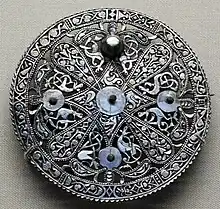 Anglo-Saxon England 5th century in England 6th century in England 7th century in England 8th century in England 9th century in England 10th century in England Anglo-Saxon literature Anglo-Saxon archaeology Anglo-Saxon art Christianity in Anglo-Saxon England Conflict in Anglo-Saxon England 11th century in England Fiction set in Anglo-Saxon England Hen Ogledd Anglo-Saxon kingdoms Anglo-Norse England Old English Anglo-Saxon paganism Anglo-Saxon people Peoples of Anglo-Saxon England Anglo-Saxon studies scholars Anglo-Saxon settlements Anglo-Saxon society Selected image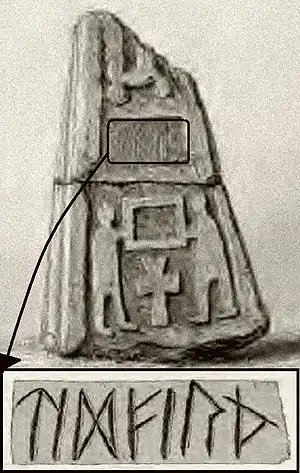 Tidfrith Cross Slab A 19th century engraving of a possibly early 9th century cross-slab from the cemetery of Wearmouth, north-east England Selected biography
Aldhelm (Old English: Ealdhelm) (c. 639 – 25 May 709), Abbot of Malmesbury Abbey, Bishop of Sherborne, Latin poet and scholar of Anglo-Saxon literature, was born before the middle of the 7th century. He is said to have been the son of Kenten, who was of the royal house of Wessex.[1] He was certainly not, as Aldhelm's early biographer Faritius asserts, the brother of King Ine. After his death he was venerated as a saint, his feast day being the day of his death, 25th May. (more...) Things you can do
Featured articles and lists
Related portalsWikiProjects
Associated WikimediaThe following Wikimedia Foundation sister projects provide more on this subject:
| |||||||||||||||||
- Walsh A New Dictionary of Saints p. 21-22
